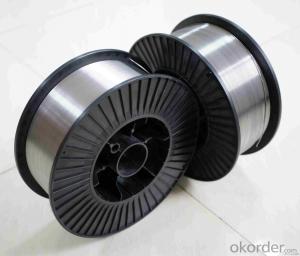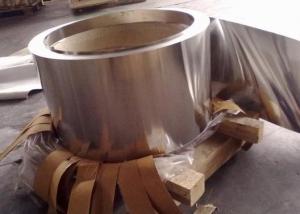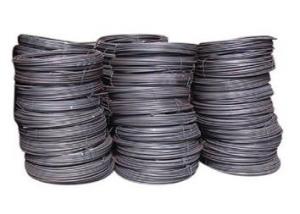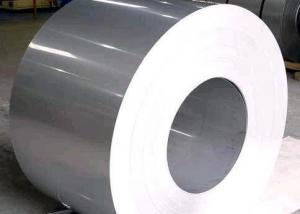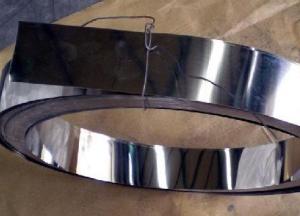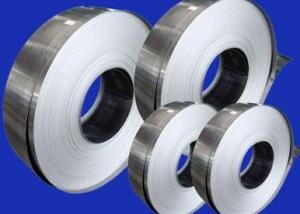WS ER70S-6 CO2 Gas Shielded Welding Wire 1.2mm with MSDS, CE, SGS, ISO9001
- Loading Port:
- Qingdao
- Payment Terms:
- TT or LC
- Min Order Qty:
- 10 m.t.
- Supply Capability:
- 1000 m.t./month
OKorder Service Pledge
OKorder Financial Service
You Might Also Like
WS ER70S-6 CO2 Gas Shielded Welding Wire 1.2mm with MSDS, CE, SGS, ISO9001
Main Structure of Gas Shielded Welding Wire
welding wire
1.professional manufacturer and exporter
2.ISO,SGS,CE approved
3.free sample, prompt delivery, global customers
4.Shield gas : CO2
5.Material:Carbon steel
6.Package:15kgs-20kgs/spool, 100kg-250kgs/barrel
7.Application:Current range (A) 0.8mm 40-140
8.Lead time:20-30 days after receiving L/C or Pre-paid
Advantages of Gas Shielded Welding Wire
1. Type: CO2 wire/SG2 welding wire/ Mig wire/ Copper coated welding wire/Solid welding wire/ Gas shielded welding wire
2. Raw material: MIld steel/ Carbon steel/ Qingdao steel wire
3. Surface--- Copper coated
4. Application : Co2 shielded welding, welding of mild steel material,
5.Diameter:0.8mm-1.6mm
6.Flux content: without flux
Datas and Information for Gas Shielded Welding Wire
Welding wire chemical compositions % :
Mark | Confirm with | Chemical composition, % | |||||||||
ER50-6 |
AWS ER70S-6 | C | Mn | Si | P | S | Ni | Cr | Cu | Mo | V |
0.08 | 1.51 | 0.89 | 0.015 | 0.013 | 0.016 | 0.021 | 0.18 | 0.006 | 0.003 | ||
Mechanical properties of welding wires:
Mechanical properties of weld metal | Normative |
Tensile strength, MPa | 545 |
Yield strength, MPa | 452 |
Elongation ratio, % | 29 |
Impact toughness, J | 91(-30°C) |
Pictures:

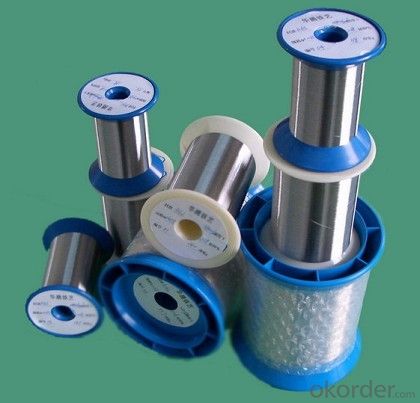
- Q:How does stainless steel wire resist heat?
- Stainless steel wire resists heat due to its high melting point and excellent oxidation resistance. The alloying elements, primarily chromium, in stainless steel form a protective oxide layer on the surface that prevents further oxidation and corrosion at high temperatures. This oxide layer acts as a barrier, keeping the wire stable and preventing it from deforming or losing strength when exposed to heat.
- Q:How does the diameter of stainless steel wire affect its strength?
- The diameter of stainless steel wire directly affects its strength. Generally, a larger diameter wire will have greater strength compared to a smaller diameter wire of the same material. This is because a larger diameter wire has a larger cross-sectional area, resulting in a higher amount of material to resist forces and deformation. Consequently, the larger diameter wire can withstand more tension or load before breaking or undergoing permanent deformation.
- Q:Stainless steel screws and steel screws, that kind of hardness?
- In terms of strength aloneCarbon steel is stifferCan go to level 12.9Stainless steel is better in corrosion resistance and acid resistance
- Q:What are the different types of stainless steel wire rope connectors available?
- A variety of stainless steel wire rope connectors are available, each tailored to specific applications and requirements. Some commonly used connectors include: 1. Wire Rope Clips, also referred to as wire rope clamps, are utilized to create loops or eyes in wire rope by securing the loose end back to the rope. They come in different sizes and configurations, such as drop forged or malleable cast iron. 2. Swage Fittings are employed to permanently terminate wire rope by compressing the fitting onto the wire using a swaging tool or machine. They offer a strong and secure connection, commonly used in safety-critical applications. 3. Thimbles are utilized in conjunction with wire rope to safeguard it from wear and abrasion. They are inserted into the loop or eye of the wire rope before attaching any connectors, providing a smooth surface and preventing kinking or crushing. 4. Turnbuckles are adjustable connectors used to tension and adjust the length of wire rope. They consist of two threaded eyelets with a central body that can be rotated to increase or decrease tension in the wire rope. Turnbuckles are frequently used when periodic tightening or loosening of wire rope is required. 5. Quick Links, also known as carabiners, are connectors consisting of a metal loop with a threaded gate. They are used for swift connection or disconnection of wire ropes, chains, or other objects. Quick links are commonly utilized in applications where frequent attachment and detachment of wire ropes are necessary. 6. Shackles are U-shaped connectors with a pin or bolt across the opening. They are used to connect or join wire ropes, chains, or other objects. Shackles are available in different designs, such as anchor shackles, bow shackles, or screw pin shackles, each suitable for various applications and load capacities. 7. Eye Bolts are bolts with a loop or eye at one end, designed to serve as attachment points for wire ropes. They are commonly used in overhead lifting applications or as anchor points for securing wire ropes. These examples highlight the range of stainless steel wire rope connectors available. The choice of connector depends on the specific application, load capacity, and desired level of security and durability. It is crucial to select the appropriate connector to ensure the safe and reliable performance of the wire rope system.
- Q:Is stainless steel wire resistant to stress corrosion cracking?
- Yes, stainless steel wire is resistant to stress corrosion cracking. Stainless steel has a high resistance to corrosion due to the presence of chromium, which forms a protective layer on the surface of the material. This protective layer acts as a barrier against corrosive environments, preventing the penetration of corrosive agents that can cause stress corrosion cracking. Additionally, the alloying elements in stainless steel, such as nickel and molybdenum, further enhance its resistance to stress corrosion cracking. As a result, stainless steel wire is widely used in applications where it is exposed to harsh environments, such as marine, chemical, and oil and gas industries, where stress corrosion cracking is a major concern.
- Q:What are the different types of stainless steel wire rope turnbuckles?
- There are several types of stainless steel wire rope turnbuckles available, including jaw and jaw, eye and eye, hook and hook, jaw and eye, and jaw and hook. Each type offers unique features and applications depending on the specific needs of the project or application.
- Q:What's the difference between a stainless steel cup and a nonmagnetic one?
- Non-magnetic stainless steel, that is, austenitic stainless steel, 200 series and 300 series are non-magnetic, and magnetic stainless steel belongs to martensitic steel, the 400 line is also called stainless steel, iron belongs to this kind. With magnetic stainless steel, magnetic permeability is strong, suitable for electromagnetic ovenTheoretically speakingNon-magnetic stainless steel pots do no harm to your bodyThere are many aluminum kettles. They contain other metals. There are many aluminum kettles that do harm to the body, not experts
- Q:Can stainless steel wire be used for making jewelry clasps?
- Yes, stainless steel wire can be used for making jewelry clasps. Stainless steel is a popular choice for jewelry making due to its durability, strength, and resistance to corrosion. It is a versatile material that can be easily manipulated into different shapes and sizes, making it suitable for creating various types of clasps such as lobster clasps, spring ring clasps, and toggle clasps. Additionally, stainless steel wire is available in different finishes, including polished, brushed, or plated, allowing for a wide range of design options. Overall, using stainless steel wire for making jewelry clasps ensures the longevity and quality of the finished piece.
- Q:Is stainless steel wire suitable for wire EDM machining?
- Wire EDM machining can effectively use stainless steel wire because of its exceptional electrical conductivity and high tensile strength. This type of machining involves the use of a thin wire that is conductive to electricity for precise material cutting. Stainless steel wire is commonly selected for wire EDM machining due to its positive attributes. One advantage of stainless steel wire is its ability to endure the intense heat produced during the EDM process, thanks to its high melting point. This quality makes it suitable for machining materials with high levels of hardness, such as hardened alloys or tool steels. Furthermore, stainless steel wire is resistant to corrosion, ensuring its durability and longevity throughout the machining procedure. It also maintains its shape and size under high tension, displaying excellent dimensional stability. This stability is crucial for achieving accurate and precise cuts during the machining process. Moreover, stainless steel wire is available in various grades, each possessing unique properties. This variety allows for flexibility in selecting the appropriate stainless steel wire for specific machining requirements. For instance, certain grades may offer improved machinability or higher tensile strength, making them suitable for different applications. In conclusion, stainless steel wire is an ideal choice for wire EDM machining due to its outstanding electrical conductivity, high melting point, corrosion resistance, dimensional stability, and range of available grades. Its utilization enables the precise and accurate cutting of diverse materials, making it an invaluable tool in the manufacturing industry.
- Q:Is stainless steel wire safe for food applications?
- Yes, stainless steel wire is generally considered safe for food applications. Stainless steel is known for its durability, corrosion resistance, and easy cleaning properties, making it a popular choice for various food-related uses. It is commonly used in food processing equipment, such as sieves, baskets, and trays, as well as in food preparation tools like whisks and spatulas. Stainless steel is non-reactive and does not leach any harmful chemicals into food, ensuring its safety for direct contact with ingredients. Additionally, stainless steel is resistant to bacteria growth, making it a hygienic choice for food handling and storage. However, it is important to note that not all stainless steel alloys are suitable for food contact, so it is essential to choose food-grade stainless steel that complies with relevant industry standards and regulations.
1. Manufacturer Overview |
|
|---|---|
| Location | |
| Year Established | |
| Annual Output Value | |
| Main Markets | |
| Company Certifications | |
2. Manufacturer Certificates |
|
|---|---|
| a) Certification Name | |
| Range | |
| Reference | |
| Validity Period | |
3. Manufacturer Capability |
|
|---|---|
| a)Trade Capacity | |
| Nearest Port | |
| Export Percentage | |
| No.of Employees in Trade Department | |
| Language Spoken: | |
| b)Factory Information | |
| Factory Size: | |
| No. of Production Lines | |
| Contract Manufacturing | |
| Product Price Range | |
Send your message to us
WS ER70S-6 CO2 Gas Shielded Welding Wire 1.2mm with MSDS, CE, SGS, ISO9001
- Loading Port:
- Qingdao
- Payment Terms:
- TT or LC
- Min Order Qty:
- 10 m.t.
- Supply Capability:
- 1000 m.t./month
OKorder Service Pledge
OKorder Financial Service
Similar products
New products
Hot products
Related keywords

